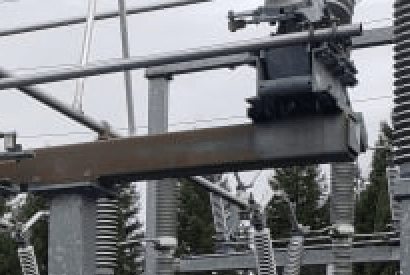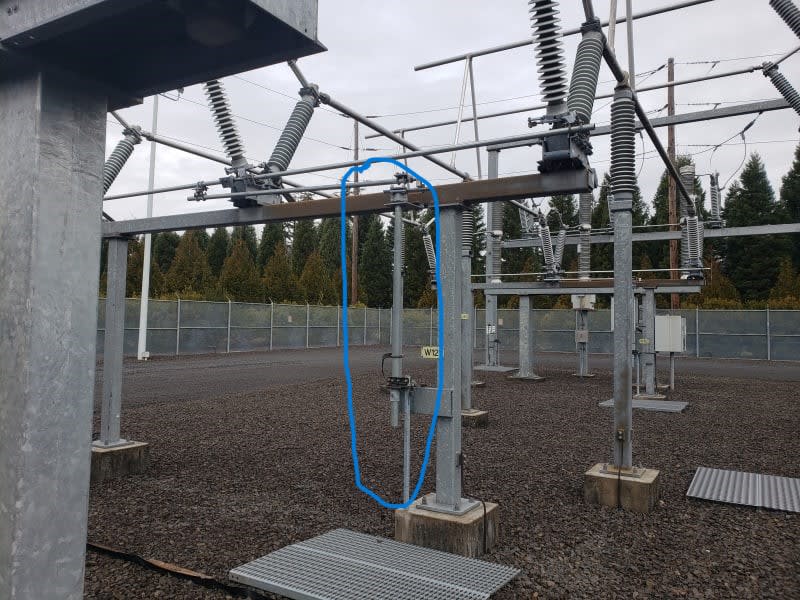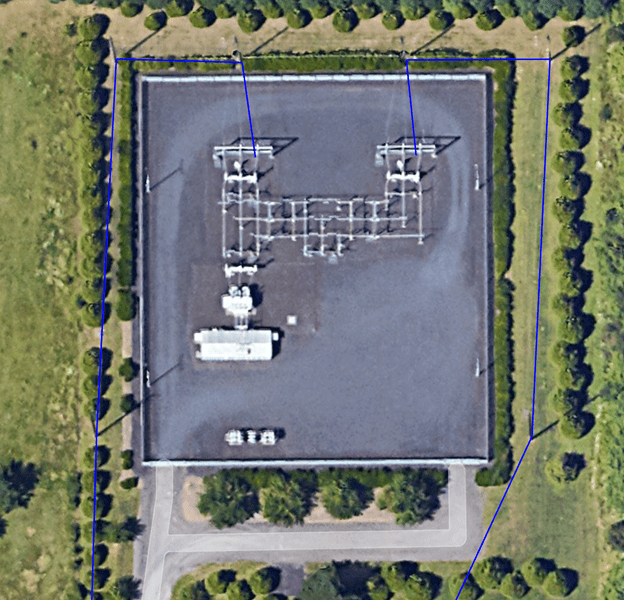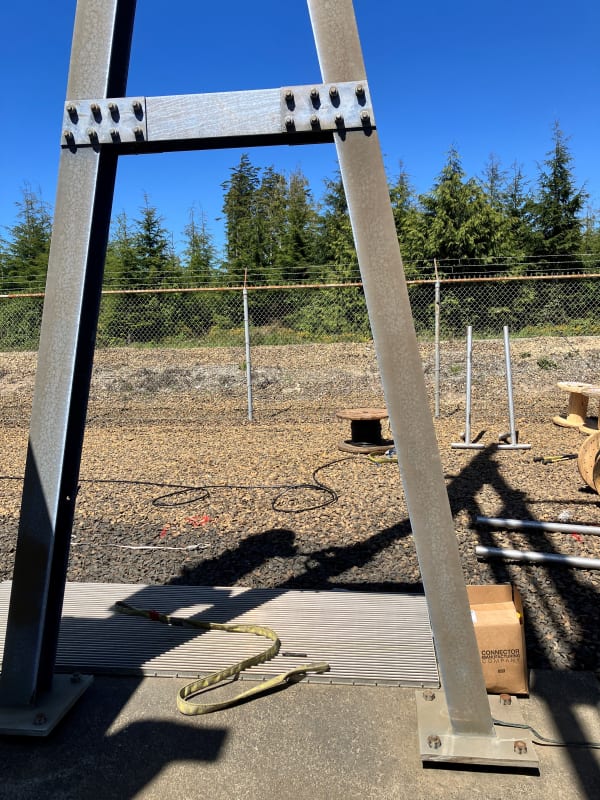davidbeach
Electrical
At one substation we've noticed that on multiple two-legged three-phase stands for the 115kV equipment there is the appearance of corrosion between B- and C-phases. Nothing apparent between A- and B-phases.
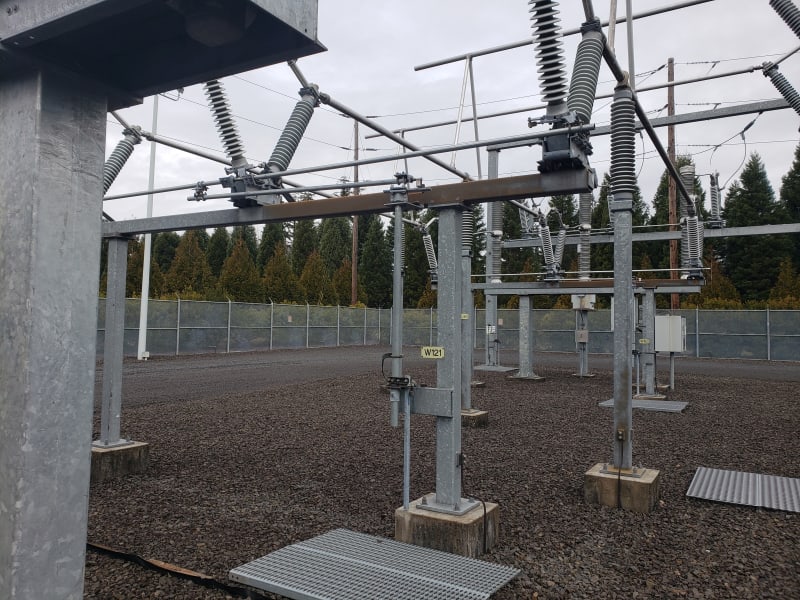
As can be seen, it isn't just one support structure, and it has a hard edge at B-phase. Interestingly it is just the space between B-phase and C-phase. It doesn't seem to build up across the mounts, it just starts on the C side of B and on the B side of C.
Bad galvanizing seems a bit of a stretch given how it's the same on both supports visible and that it has such sharp edges.
The possibility of only the leg nearer to C-phase being grounded (can't tell in the photos, hasn't been field verified) contributing has been raised. Can't totally refute that, but if so, wouldn't there be at least some corrosion between A- and B-phases? And wouldn't there also be some corrosion between the cross arm and the ground connection?
Thoughts, opinions, questions welcome. Questions that require field observation to answer may take a few days.
Thanks.
When one this sentence into the German to translate wanted, would one the fact exploit, that the word order and the punctuation already with the German conventions agree.
-- Douglas Hofstadter, Jan 1982

As can be seen, it isn't just one support structure, and it has a hard edge at B-phase. Interestingly it is just the space between B-phase and C-phase. It doesn't seem to build up across the mounts, it just starts on the C side of B and on the B side of C.
Bad galvanizing seems a bit of a stretch given how it's the same on both supports visible and that it has such sharp edges.
The possibility of only the leg nearer to C-phase being grounded (can't tell in the photos, hasn't been field verified) contributing has been raised. Can't totally refute that, but if so, wouldn't there be at least some corrosion between A- and B-phases? And wouldn't there also be some corrosion between the cross arm and the ground connection?
Thoughts, opinions, questions welcome. Questions that require field observation to answer may take a few days.
Thanks.
When one this sentence into the German to translate wanted, would one the fact exploit, that the word order and the punctuation already with the German conventions agree.
-- Douglas Hofstadter, Jan 1982

